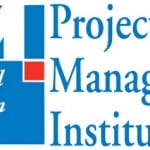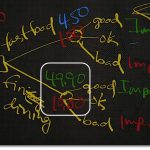PMI Global Congress 2012 excerpts – How to be a Leader
PMI Global Congress 2012 excerpts – How to be a Leader
This is part 2 of the PMI Global Congress 2012 in Vancouver, BC. For part 1, see PMI Global Congress 2012 – First Report. The focus for the week is Change
The congress kicked off with a keynote from Marcus Buckingham, author of Standout. Marcus is a proponent of identifying and enhancing one’s unique strengths. Inspired by his presentation, though not having read the book or taken the related strengths assessment, my mind was opened to the possibilities. I must admit that I am still hard pressed to describe the approach in detail. Cyndee Miller, a PM Network senior editor took a quick shot at it in her blog post “Which Leadership Style Fits Your Personality”.
The concept works for me. Marcus’ book is penned onto my reading list. People are complex. There is no singular approach, or singular style. As the congress expanded, the theme was repeated. No surprise there, the content was well designed. With sixteen or more tracks flowing simultaneously, as well as vendor presentations, I chose to focus primarily on the leadership and change tracks that appeared to relate most closely to PMBOK® content updates.
Apologies to my friend, Sherri Thomas, whose presentation on Career Empowerment reportedly drew a large crowd. Missed her presentation in favor of “Embracing and Exploiting Change”. My wife, who also knows Sherri rebuked me. I have and read Sherri’s books, and gobbled up the PDF Career Empowerment: Connecting With Others Who Can Inspire You Teach You Something New, or Help Promote Your Ideas of her talk as a refresher.
“I don’t know the key to success, but the key to failure is trying to please everybody.”
Bill Cosby
What follows is an attempt to synthesize more content. One week was barely enough.
Learning to filter and focus played out as a theme all week. The key, therefore is to understand how to properly identify and interpret stakeholder needs with limited time or input. The new PMBOK® area is Stakeholder Management. A potential monitoring and controlling emphasis that hopefully incorporates more than motivational theory and register tracking.
One model defined the difference between leading, coaching, and managing. The only reference to the word ‘leading’ occurs on page 240 of the PMBOK® 4th Edition. That must change. Project managers need to shift from being managers toward being coaches and leaders. We mix all three functions, and one model yielded a strong approach. I created the following table of associations from my notes. Leading/Coaching/Managing is a continuum. This approach allows us to determine the personal strengths and tools we might use based on the scale of the desired accomplishment and our alignment with the various stakeholders.
| Leading | Coaching | Managing |
| Inspire | Ask | Tell |
| Chaos management | Helping others | Directing, Controling |
| Organizing | Guiding others to self teach | |
| Change | Clarity | Closeness |
| Lead/bring about change | Active listening, facilitatin solutions | Order, stability, plans & budgets |
| Vision / Motivation | Other person is the expert | Collect and report status |
| Take someone where they cannot take them selves | ||
| Long Term | Self Sustaining Solutions | Short Term Problems |
Another approach placed five variables: Functionality, Tools, Technology, Processes and People on a continuum that moves from New > Unknown > Same. Consider the elements of a project or an effort associated with each of the five variables. If the elements are new, we need to lead. If the elements are unknown, we need to coach the team to find a solution. If the elements are the same, then we manage. The continuum for each of the variables is seldom the same, so we may be leading process change, but managing the use of known tools on the same project.
All managers are familiar with a hierarchy that runs similar to Vision > Mission > Strategy > Program > Objectives > Project > Milestone > Task. This hierarchy suggests that leadership is only associated with vision or mission. We less often consider that sub-elements of a project might be ‘new’ and therefore also require a leadership approach more than a management approach. The model presented seems to better fit the complexity of human interaction.
Repeating a theme – Emotional intelligence and perception will play a stronger role. We experience emotions almost instantly, and lock onto our perceptions. Mindfulness is a concept that arises both from leadership and emotional intelligence. Being in a mindful state, we can objectively HOLD OPPOSITES. Holding opposites rejects the use of but/or/not/nevertheless replacing each of them with AND. Most people have seen the young lady and old crone illusion. Both co-exist.
Mindfulness confirms that we can Lead AND Manage, Innovate AND Maintain Stability, see Big Pictures AND Details, operate both Hands on AND Hands Off, Encourage Individuals AND the team.
Humans have the ability to perceive an incredible amount of information in a moment. We less often teach ourselves to process all of the information. We lock onto perceptions, true or false. Much of the non-neurological measurement and practice associated with emotional intelligence is based on with the work of Dr. Paul Ekman. He proved the theory that emotions and related facial expressions are universal, while gestures are cultural. The television show “Lie to Me” used the facial recognition concept based on the work of Dr. Ekman. He blogs about the accuracy of the show on his site. I am ready to take his course to become a better leader and manager.
J. D. Mayer, Peter Salovey, David R. Caruso (2004) created a measurement system based on facial data points. An extension of Dr. Ekman’s theory. The Mayer-Salovey-Caruso Emotional Intelligence Test – MSCEIT is an EI assessment system based on:
- Identifying/Perceiving Emotions
- Facilitating thought/Using Emotions
- Understanding Emotions
- Managing Emotions
Presentation attendees were treated to an abbreviated demonstration and test in order to get a sense of their ability to identify, use, understand and manage emotions. The four categories are plotted creating a pattern that identifies your strengths and areas for improvement. While one can be trained to better recognize universal expression as a means to interpret needs and lead people, the MSCEIT provides everyone a more objective starting point toward collaborative efforts.
Relating back to the presentation on the anatomy of Emotional Intelligence, the amygdala performs emotion processing, while the neocortex analyses rational data. The amygdala is like the elephant while the neocortex is the rider attempting to manage its direction. I loved the analogy. Almost as good as comparing social change to the effort of turning a dinosaur with a rolled-up newspaper. A Mindful State is the integration and processing of data from both the amygdala and the neocortex. A holistic approach.
Learning our strengths at Mindfully identifying both our own emotions and those of others allows us to choose an objective model that might suggest leadership, coaching, or management. Emotion occurs as microbursts. Small facial expressions or combinations that are mirrored by the release of hormones and bodily function. Temperment reflects a person’s more stable state, and is smoother over time. Mood is an aggregate of temperament and emotion, controlled by our Mindful state. If we process and understand, we can operate more objectively, without throwing out human emotion, and therefore become better leaders, coaches and managers.
Outcomes are what we need to achieve. Behaviors are what we need to do. Emotional intelligence allows us to guide them together. Like steering that elephant. What we appear to be seeking is an artificial harmony, based upon constructive rather than destructive conflict.
So, leadership requires a better understanding of ourselves. A better understanding of others. The willingness to integrate rather than differentiate. And the consideration of several new objective models and related tools. It appears the field of project management has some great opportunities, a lot of learning AND plenty of leading to do!
Steven Fullmer
Interface Technical Training Windows 7 Instructor and PMP
You May Also Like
Agile, coaching, Ekman, Emotional Intelligence., Global Congress, leadership, MSCEIT, PMI, PMP, Project Management, Sherri Thomas
A Simple Introduction to Cisco CML2
0 3901 0Mark Jacob, Cisco Instructor, presents an introduction to Cisco Modeling Labs 2.0 or CML2.0, an upgrade to Cisco’s VIRL Personal Edition. Mark demonstrates Terminal Emulator access to console, as well as console access from within the CML2.0 product. Hello, I’m Mark Jacob, a Cisco Instructor and Network Instructor at Interface Technical Training. I’ve been using … Continue reading A Simple Introduction to Cisco CML2
Creating Dynamic DNS in Network Environments
0 645 1This content is from our CompTIA Network + Video Certification Training Course. Start training today! In this video, CompTIA Network + instructor Rick Trader teaches how to create Dynamic DNS zones in Network Environments. Video Transcription: Now that we’ve installed DNS, we’ve created our DNS zones, the next step is now, how do we produce those … Continue reading Creating Dynamic DNS in Network Environments
Cable Testers and How to Use them in Network Environments
0 731 1This content is from our CompTIA Network + Video Certification Training Course. Start training today! In this video, CompTIA Network + instructor Rick Trader demonstrates how to use cable testers in network environments. Let’s look at some tools that we can use to test our different cables in our environment. Cable Testers Properly Wired Connectivity … Continue reading Cable Testers and How to Use them in Network Environments







Pingback: PMI Global Congress 2012 - The focus for the week is Change
Pingback: PMI Global Congress 2012 - The focus for the week is Change